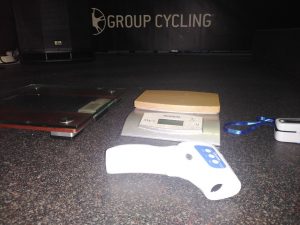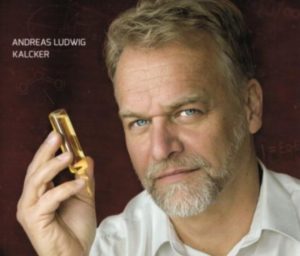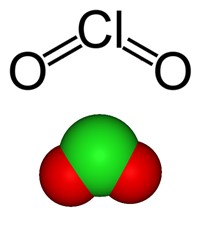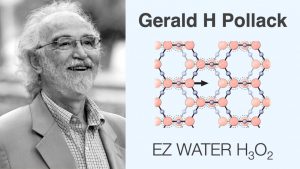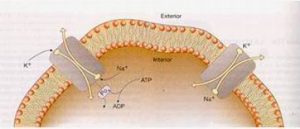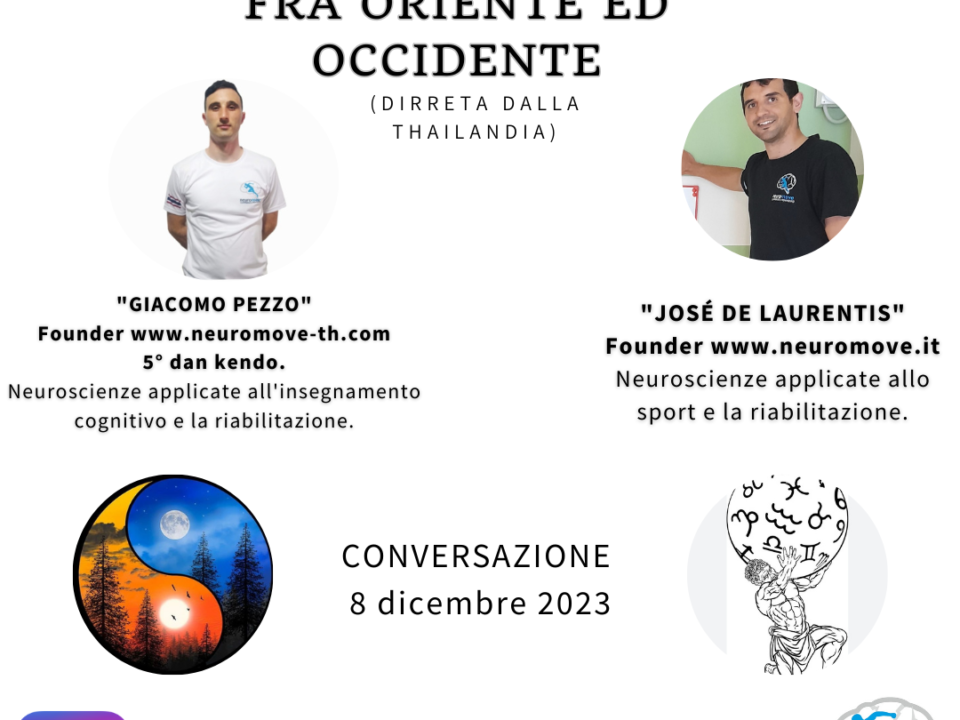- Motion Realizing
- info@neuromove.it
EFFECTS OF CHLORINE DIOXIDE ON HOMEOSTATIC REGULATION DURING A STANDARD SPINNING TRAINING
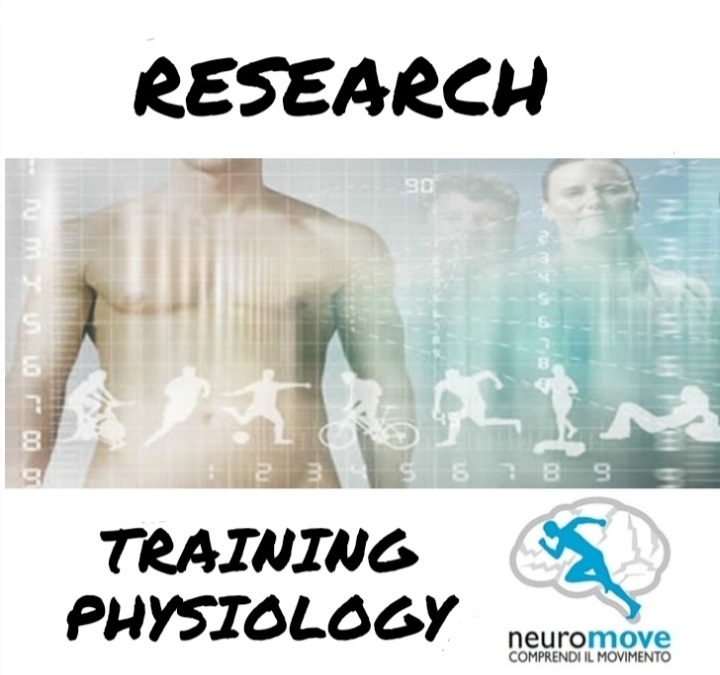
RESEARCH ON THE PHYSIOLOGY OF TRAINING
(CENTER FOR STUDIES OF THE HUMAN MOVEMENT)
THEME:
Effects of chlorine dioxide on homeostatic regulation during a standard spinning training.
INDEX
Part I
¶.1 Topics and objectives.
¶.2 Hypothesis
¶.3 Methodology of research and data collection.
Part II
¶4 Introduction to Biophysics
¶5 Biophysics of chlorine dioxide.
¶6 What is Oxidation; e oxidative therapies.
¶7 Bohr effect and metabolism of dioxide in the form of CDS.
¶8 Biophysics of structured water.
¶9 Thermoregulation.
¶10 Sources of energy creation.
Part iii
¶.12 Data analysis and hypothesis verification.
¶.13 Conclusion.
¶.14 Bibliography.
¶.1 Topics and objectives.
TOPIC:
Effects of chlorine dioxide on homeostatic regulation during a standard spinning training.
Research object.
What effect is observed during and after the consumption of chlorine dioxide on homeostatic regulation during a standard endurance training on a spinning bike?
General objectives:
-Describe the effects of the consumption of chlorine dioxide diluted in water on biological homeostasis.
Specific objectives:
- Compare the parameters between the first training in which no dioxide is consumed; “only natural water”, with the second workout in which chlorine dioxide diluted in plain water is consumed.
-Analyze the effects of chlorine dioxide diluted in water on homeostasis using the following parameters:
1) Body temperature. (Thermal balance)
2) Heartbeats. (Heart balance)
3) Body weight. (Caloric, thermal and water balance)
4) Weight of sweat. (Calorie balance / Power of energy creation)
5) Oxygen in blood. (Saturation in blood)
Data collection tools:
1)”Electric thermometers”
2) Beat meter clock. (Athlete)
3) Scale to measure sweat.
4) Scale to measure body weight.
5) Oximeter.
Data collection tools
¶.2 Hypothesis
-Adequate consumption of chlorine dioxide could be an excellent strategy to keep the internal organic environment in balance, and thus prevent electrochemical imbalances of the organic cells responsible for creating the energy necessary to carry out a standard resistance training on a spinning bike :
1) The body temperature will hold a lower average in training in which "YES" chlorine dioxide diluted in water is consumed, compared to training in which only natural water is consumed:
-So chlorine dioxide, through its extra oxygenating quality, would help the energy creation of cells in general, and my fascial cells in particular, ensuring that the cardiorespiratory system works in a more effective and economical way:
2-So the average heartbeat will be lower in training in which chlorine dioxide diluted in water is consumed, compared to training in which no dioxide is consumed, ie only natural water.
– Chlorine dioxide through its oxygenating properties would help oxygenate the cells in general, but my fascial cells in particular:
3) For this reason, oxygen in the blood will have a higher average in training in which "YES" chlorine dioxide is consumed, compared to training in which no dioxide is consumed, ie only natural water.
-Through a possible general enhancement in the biological energy creation performance necessary to carry out a standard spinning workout and based on the physical difference between the concept of temperature and heat given by Gerald Pollack, and also on the fact that sweat would be created between other things to lower the body temperature through evaporation, we assume that:
4- The weight of the total sweat will be lower in the training in which chlorine dioxide diluted in water is consumed (Second training) compared to the training in which the dioxide is not consumed.
-On the basis of the previous hypothesis, and on the fact that chlorine dioxide would contribute an extra amount of oxygen to the body, which would help for optimal functioning in the energy creation process, we hypothesize the following.
5-The difference between the physical pre-test net body weight, with the physical post-test weight in the first workout (Non Dioxide; only natural water) will be greater than the difference between the Pre-test net body weight, with the post-test one of the second workout (Si Dioxide) or the body weight will be reduced more in the first workout than in the second.
¶.3 Research method and data collection:
Project: Evaluative / Descriptive / Comparative:
Observation unit: Michele Delaini, 42, Spinning Athlete.
Data collection technique: systematic observation of different types of tests:
Place of research: Centro Bernstein
| 1) #Body temperature. | ||
| 2) Heartbeat. | ||
| 3) Oxygen in blood; Oximeter. | ||
| 4) weight of clothes and towel. | ||
| 5) Body weight. |
Data analysis: probabilistic reasoning, deductive logic, quantitative logic.
CORRECT WAY TO TAKE THE DILUTED CHLORINE DIOXIDE IN WATER:
- Protocol 1: Adaptation week to chlorine dioxide:
After the first workout; Friday 28, the athlete during the week until the second and last day of training; Friday 4th, however, he will have to adapt to the effects of the substance, i.e. he will drink it with the aim of adapting to its biophysical effects, and therefore be able to consume it without problems during the physical test. (1 dose every 1 hour; space also 1 meal times)
Total 60 ml of dioxide in 9 liters of water for 6 days.
Amount ; 10 ml diluted in 1 ½ liter of natural water.
Mode: 10 doses per day every 1 hour, even at 1 meal time.
Duration: (6 days / from Saturday 28th to Thursday 3rd)
- 2.Protocol: during the second training session:
The doses will be 200ml every 15 minutes, as will be done with natural water (First Workout).
At the end of each consumption, put it back in the refrigerator to avoid exposing the chlorine dioxide to ambient temperature, since the dioxide gas in the form of “CDS” if it evaporates.
DATA COLLECTION (in both workouts)
Data collection protocol “3 Moments ":
“TEST” First Workout; Friday 28 May 2021.
WEATHER INFO: What was the weather like in Verona on May 28, 2021 –
Verona Weather Archive » ILMETEO.it Temperature at 18:00, 23 DEGREES; “Sunny”.
| A) Physical pre-test: | |||
| 1) Body temperature. | 36,5 | ||
| 2) Heartbeats. | 75 | ||
| 3) Oxygen in blood; Oximeter. | 98 | ||
| 4) weight of clothes and towel) | 1,275 | ||
| 5) Body weight. | 82,8 | ||
| B) During physical test | |||
| 20 ’Min | |||
| 1) Body temperature. | 36,9 | ||
| 2) Heartbeats. | 136 | ||
|
3) Oxygen in blood; Oximeter.
|
96 | ||
| 40’Min | |||
| 1) Body temperature. | 37,3 | ||
| 2) Heartbeats. | 129 | ||
| 3) Oxygen in blood; Oximeter. | 95 | ||
| 65’min | |||
| 1) Body temperature. | 37,3 | ||
| 2) Heartbeats. | 130 | ||
|
3) Oxygen in blood; Pulse oximeter.
|
98 | ||
| 80 ’Min | |||
| 1) Body temperature. | 37,1 | ||
| 2) Heartbeats. | 132 | ||
| 3) Oxygen in blood; “Oximeter” . | 97 | ||
| c) Physical post-test: | |||
| 1) Body temperature. | 36,3 | ||
| 2) Heartbeats. | 95 | ||
| 3) Oxygen in blood; Oximeter. | 98 | ||
| 4) weight of wet clothes and towel | 1,336 | ||
| 5) Body weight. (Pre-urine) | 83,2 | ||
| 6) Body weight (post urine) | 82,5 | ||
| 1) Average body temperature. | 36,9 | ||
| 2) Average Heartbeat | 116,1666667 | ||
| 3) Average of oxygen in blood; “Oximeter”. | 96,5 | ||
| 4) Sweat | 0,061 | ||
| 5) Difference between pre- and post-workout body weight (before urinating) | +0,4 | ||
| 6) Difference between pre- and post-workout body weight (after urinating) | – 0,3 | ||
SUMMARY VIDEO OF THE DAY:
Friday 28 May 2021
“TEST” Second Workout; Friday 4 June 2021
WEATHER INFO DURING THE DAY: What was the weather like in Verona on May 28, 2021 – Verona Weather Archive »ILMETEO.it. Temperature at 18:00, 29 degrees; “SUNNY”.
| A) Physical pre-test: | |||
| 1) Body temperature. | 36,2 | ||
| 2) Heartbeats. | 70 | ||
| 3) Oxygen in blood; Oximeter. | 98 | ||
| 4) weight of clothes and towel) | 1,277 | ||
| 5) Body weight. | 81,5 | ||
| B) During physical test | |||
| 20′ Min | |||
| 1) Body temperature. | 36,9 | ||
| 2) Heartbeats. | 136 | ||
|
3) Oxygen in blood;
Oximeter.
|
96 | ||
| 40’Min. | |||
| 1) Body temperature. | 37,3 | ||
| 2) Heartbeats. | 129 | ||
| 3) Oxygen in blood; Oximeter. | 95 | ||
| 65’min | |||
| 1) Body temperature. | 37,3 | ||
| 2) Heartbeats. | 130 | ||
|
3) Oxygen in blood; OR.
|
98 | ||
| 80 ’Min. | |||
| 1) Body temperature. | 37,1 | ||
| 2) Heartbeats. | 132 | ||
| 3) Oxygen in blood; Oximeter. | 97 | ||
| C) Physical post-test: | |||
| 1) Body temperature. | 36,7 | ||
| 2) Heartbeats. | 95 | ||
| 3) Oxygen in blood; Oximeter. | 98 | ||
| 4) weight of wet clothes and towel | 1,397 | ||
| 5) Body weight. (Pre-urine) | 81,8 | ||
| 6) Body weight (post urine) | 81,8 | ||
| 1) Average body temperature. | 36,83333333 | ||
| 2) Average Heartbeat | 110,8333333 | ||
| 3) Average of oxygen in blood; Oximeter. | 97,25 | ||
| 4) Sweat | 0,12 | ||
| 5) Difference between body weight before and after training (before urinating) | +0,3 | ||
| 6) Difference between body weight before and after training (after urinating) | +0,3 | ||
SUMMARY VIDEO OF THE DAY:
Friday 04 June 2021
PROTOCOL OF BOTH WORKOUTS:
– Minute “0” Working: (Spinning Resistance:” 1″ round)
-Minute “8” Working: (Spinning Resistance: “1 /4” round)
-Minute “20” Working: (Spinning Resistance:” 1 /2 +” round)
-Minute “29” Working: (Spinning Resistance:” 1 /2 -” round)
-Minute”41″ Working: (Spinning Resistance:” 1 /2 +” round)
-Minute”50″ Working: (Spinning Resistance:” 1 /2 -” round)
-Minute”61″ Working: (Spinning Resistance:” 1 /2 -” round)
-Minute”70″ Working: (Spinning Resistance:” 1 /2 -” round)
-Minute”80 up to 86 “: (Spinning Resistance:” 1 /4 -” round)
Total training volume: 1.26HS
WATER RECRUITMENT PROTOCOL:
1- Min “0”, 20O ml.
2- Min “15”, 20O ml.
3- Min “30, 30O ml.
4- Min “45”, 20O ml.
5-Min “60” 20O ml.
6- Min “75”, 20O ml.
7-Min “86” 200 ml.
Total training volume: 1.26 hs Water: 1500 ml = 1.5 liters
(75 ml of chlorine dioxide in the form of “CDC”, diluted in 1425 ml of mineral water)
PREPARATION OF CHLORINE DIOXIDE IN THE FORM OF “CDS” , Cchloride Dioxide Solution.
IMPORTANT:
THE WORKING METHODOLOGY WILL’ EQUAL IN BOTH WORKOUTS.
RECOMMENDATIONS FOR THE ATHLETE:
CLOTHES AND TOWEL MUST BE THE SAME IN BOTH WORKOUTS.
THE ATHLETE MUST PAY ATTENTION TO THE NEURO-PSYCHO-PHYSICAL CHARGE OF HIS DAILY LIFE as well as THE DIET 1 WEEK BEFORE BOTH WORKOUTS.
THE TRAINING METHODOLOGY WILL BE "STANDARD" KNOWN BY THE ATHLETE, AND SINCE THE ATHLETE IS ALSO A SPINNING TEACHER, HE WILL PERFORM A TRAINING METHODOLOGY THAT HE HAS ALREADY DONE PREVIOUSLY (1: 26HS TOTAL VOLUME), SO AVOID THE NEURO COGNITIVE MOTOR SPHERE WITH THE LEARNING OF A NEW TRAINING METHOD.
Date: Friday 28th MAY (mineral water) / Friday 4th June (Chlorine dioxide)
Part II
¶3 Introduction to Natural Biophysics
Biophysics is a new branch of physics and biology, which while combining both scientific paradigms, and adding discoveries and concepts of quantum physics, seeks in effect, to explain and find solutions to the problems of medicine, rehabilitation, and sports sciences. .
His paradigm to do with quantum physics, and in relation to the famous Newton event, (Andreas Kalckers 2019) says that we should not worry about how and why the apple fell, rather we must study how and why the tree had the energy needed to grow, and then bear fruit.
¶4 Biophysics of chlorine dioxide
What is chlorine dioxide?
Molecular structure of ClO2
Chlorine dioxide is a gas “yellowish” (1 chlorine ion and 2 oxygen atoms) si obtained by mixing sodium chlorite at 28% and hydrochloric acid diluted at 4%, and yes easily dissolves in water without altering its structure, whose primordial ability is to be able to be selective through the body's pH, and therefore reacts with any substance that has more acidity than 7.3 in the human body. We also know that practically all pathogens, be they bacteria, viruses, fungi or small parasites, have a higher acidity than that of a healthy body, in fact these pathogens have a pH (hydrogen potential) below 7.3, which would be a balanced pH, i.e. a slightly alkaline pH.
Thanks to its selective biophysical capacity, chlorine dioxide releases oxygen where there are pathogens with more acidity, causing their oxidation. Simply put, it burns them at the same time that it releases oxygen. There is no resistance to oxidation, if this however is powerful enough.
In fact, our body, like that of all other vertebrates, uses the same principle within the neutrophils, which have been the defense killer cells of our immune system for millions of years. These cells devour pathogens, creating an oxidation that practically kills them. With this effect, we get a more alkaline environment, with fewer bacteria, viruses or fungi, and consequently the body is able to recover and heal naturally since it will have more cellular energy available.
The selective oxidation capacity of chlorine dioxide on our body is the key to everything, many specialists they believe it is one of the greatest discoveries of modern medicine.
The most interesting is that chlorine dioxide is not only selective through PH, it even reacts differently in front of each pathogen, that is, while the more acidity the bacteria have the stronger the chemical oxidation reaction, and at least the less acidity strong is the oxidation. This is why it does not affect symbiotic bacteria as much as they usually have a similar pH range to that of the body, and this is what allows them to be symbiotic.
chlorine dioxide in the form of “CDS” at 3000 PPM it supplies the cells with five vital things:
* 1) oxygen: * acts on each mitochondrion, which is the cell's powerhouse, creating a combustion that converts ATP (adenosine / triphosphate) into ADP (adenosine / diphosphate), a process of phosphorylation to produce energy.
Oxygenation is demonstrated with the oximeter. When patients take CDS, blood oxygen measurements increase (measurements made with the oximeter).
* Involves: * Increases the cell's survival potential.
* 2) Provides ALKALINITY, * which promotes the communication processes and / or electrical conductivity necessary for the functioning of the nervous system, the hormonal system and the immune system.
* Involves: * Increases the cell's survival potential.
* 3) Provides a potential or electrical charge * sufficient to activate redox processes favorable to intracellular and intercellular communication.
* Involves: * Increases the cell's survival potential.
* 4) Disinfects: * Kills fungi, bacteria and inactivates any virus, since “burns” (oxidizes) selectively the capsid which protects the virus. A virus has a diameter of 100 to 120 nanometers, while chlorine dioxide is a molecule of 0.24 nanometers in diameter, and it is for this reason that there is no virus that escapes their action.
* It implies: * Provides well-being to the cell.
* 5) Decontaminates: * Because it oxidizes heavy metals and other pollutants, which once oxidized become soluble in water and being soluble in water can be eliminated through urine and / or sweat. (Thermoregulation)
* It implies: * Provides well-being to the cell.
* If you increase the performance potential of a cell and provide well-being, this results in healing and if you heal the cell that makes up an organ or system, you are healing that organ or system. *
¶6 What is Oxidation; oxidative therapy.
Oxidation is the body's ability to burn fat, proteins, carbohydrates and even toxins. The result is precisely that of obtaining energy through this combustion and performing with all the organic functions necessary for life.
Therapy Oxidatives:
It is our body's way of eliminating pathogens. Harmful substances and organisms are oxidized or burned and then excreted.
ClO2 is selective. To compare its effectiveness and safety, let's see the following:
1️⃣ Ozone (O3) has an electric potential of 2.07 volts, it is the strongest oxidant.
2️⃣ Food grade hydrogen peroxide or hydrogen peroxide (H2O2) is the second oxidizing agent with a potential of 1.8 volts.
3️⃣ Chlorine dioxide (ClO2) with 0.95 volts, is the weakest but safest and most selective oxidant of all those used.
4️⃣ The oxygen (O2) we breathe has an electrical potential of 1.3 volts.
🔸The electric potential of the healthy cells of our body is equal to 1.3 Volts, and they support without any damage, electric potentials less than 1.3 Volts, that is, it does not cause any damage to the tissues.
🔸 Unlike healthy cells, bacteria, viruses, fungi and microscopic parasites, in addition to heavy metals, have an electrical potential lower than the chlorine dioxide potential of 0.95 volts, and are therefore oxidized and removed from the body.
🔸Other oxidizing agents would oxidize healthy body cells and tissues due to their oxidation potential greater than 1.3 volts.
🔸The only oxidizing agent that is completely safe to ingest, without any risk of damage to healthy body cells, is Chlorine Dioxide in the form of “CDS”. The amounts of ClO2 pose no risk with correct dosage.
THERE IS ANOTHER OXIDATIVE THERAPY based on oxygen:
4️⃣ Hyperbaric therapy of pure concentrated oxygen (hyperbaric chambers) which pressurize oxygen, the air pressure rises up to three times higher than normal air pressure.
Under these conditions, the lungs can breathe more oxygen than would be possible, breathing pure oxygen at normal air pressure. Also if this is also used as a therapy – and not just for the “divers” which have not decompressed properly.
¶.7 Bohr effect and metabolism of chlorine dioxide in the form of CDS :(Chlorine Dioxide Solution).
Chlorine dioxide in the form of “CDS“, diluted in water, consumed orally, reaches the stomach, and through the stomach temperature is absorbed by small blood and lymphatic vessels in the region ofgastric wall, which will later also go to interstitial fluids.
In honor of its discoverer, the effect of pH or carbon dioxide on oxygen dissociation is known as the Bohr effect.
In an acidic environment, hemoglobin releases oxygen more easily, while in a basic environment the bond with oxygen is stronger.
More than 98% of the oxygen present in the blood is bound to hemoglobin, which in turn circulates in the bloodstream allocated within the red blood cells. Without hemoglobin, therefore, the erythrocytes would not be able to perform their task as oxygen transporters in the blood. Read on later…

Molecular structure of hemoglobin
The Bohr effect is very important during intense muscular work; in such conditions, in fact, in the tissues most exposed to stress there is a local increase in the temperature and pressure of carbon dioxide, or blood acidity. As explained, all this favors the transfer of oxygen to the tissues, shifting the hemoglobin dissociation curve to the right.
The dioxide acts through this au effectby placing the negative charge in the liquid, a similar effect is created to ozonated water, subtracting the positive charge on the protons from the cells of acid pH, beyond 7.3 (PH). If the cells are joined together, the charge can be dissipated without damaging the group, while in individual cells it creates a reduction of energy in it depending on the pH. When the dioxide “CDS” in blood finds an acid place dissociates, and the chlorine ion reacts with the ORP up to about 1.3 V. In this process it releases oxygen, which in turn creates water bonds H3 O2 (Andreas Kalcker 2019), “or structured water”, which through its greater oxygen content, however, it does not behave like normal water.
Qwhen reacts, in fact, the chlorine ion helps oxidation, or burns the pathogens (harmful germs) of acid pH above the threshold of 7.3, transforming them into oxides “ashes”; “Alkaline. After that the difference is right sodium chloride “common salt” which is sweaty from the skin, and at the same time releases oxygen which becomes essential for cellular oxygenation . Therefore, chlorine dioxide al dissociating releases oxygen into the blood, as do red blood cells (blood cells rossi) through the same principle (known as the Bohr effect), that that of be selective for acidity, or for excessive carbon dioxide.
chlorine dioxide “CDS” does it travel on hemoglobin? Andreas Kalcker, the leading researcher of the molecule says NO, in fact he claims that it is a parallel source of oxygenation, so the scientific description becomes more complex since the oxygen that this molecule contains is atomic in size.
¶.8 What is structured water?
The other possible source of energy for the body is energy thermal radiation of infrared radiation.
A study by Dr. Pollack, of the University of Washington claims that the waters structured are able to store negative electrons, which would be the true source of energy for our muscles and cells. Since i muscles are made up of 99% water and 1% protein, and since the human body has a percentage of water greater than 70%, this discovery could in fact explain the biophysical and biochemical capacity that it would have this water to create mechanical, muscular, overall energy, etc. In fact, the biochemical theory of muscle functioning of the legendary Andrew Huxley is really collapsing.
We all know that water has three well-known phases: solid, liquid and gas.
However, structured water is between solid and liquid. Therefore, it can be considered a fourth phase of water. The typical composition of tap water is H2 O, while the fourth stage is actually H3 O2. The latter has more viscosity, more organized and more alkaline than normal water. Furthermore, the its optical properties are different because of the refractive index of the water structured is at least 10% higher than ordinary water, increasing the flow of biophotons.
Structured water has more oxygen for each hydrogen atom and, therefore, more energy, with a composition of H3O2; water almost crystalline of the fourth phase.
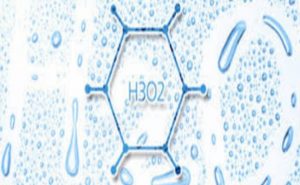 Structural geometry of structured water
Structural geometry of structured water
This fourth phase of the water goes awayne also called EZ water which means (Exclusion Zone) exclusion zone. What this water is able to exclude small molecules such as toxins or pathogens, occurs in nature with rain or water from deep sources and is in all living cells. This water has a negative charge and therefore, all cellular water has a negative charge.
Common tap water H2O / Structured water (4th phase) H3 O2
- Has a lower negative value • Has a higher negative value
- Less viscous • More viscous
- Less tidy • more tidy
- Less alkaline • More alkaline
- Less refractive capacity • 10% higher refractive index.
- Fourth phase the EZ
- Three stages; It mixes with others
- molecules • Excludes small molecules from its composition
• This keeps toxins from pathogens out of the structured water.
¶.9 Thermoregulation
The goal of thermoregulation is to maintain the temperature of the inner core at around 37 C (in the center of the body). The neuroanatomical structure that regulates it is the hypothalamus, and it is precisely the peripheral temperature receptors that give notice to this neuroanatomical area, and consequently ensure that the central core temperature is maintained at 37 C.
The hypothalamus also receives extra information from the skin's thermoregulators and the spinal cord.
In the thermoregulatory centers of the hypothalamus, the actual body temperature (real value) is compared with the reference value. For example, these values increase a lot in the case of fever, in fact it is shifted by 1 to 3 ° C due to pyrogenic substances that generate heat, whose secretion depends on the action of macrophages that engulf bacteria when activated by infections. When the fever appears, among other things due to the increase in the reference point of the regular variable, the subject is cold. Therefore the chills that make you tremble through muscle contraction are able to create heat. However, when the contraction disappears, the reference point is lowered by 1 to 3 ° C; then the subject will have too much heat eliminating the excess temperature through the evaporation of sweat.
The anterior hypothalamus is precisely the main center for regulating internal temperature.
Hypothalamus anterior view
In relation to physical exercise, when the temperature rises above the reference point, the body performs a series of physiological reactions. From the beginning the hypothalamus stimulates the sweat glands which will be favorable to the mechanism of heat loss through the evaporation of sweat. Thus the vasomotor control center will increase the cutaneous blood flow, which will allow the overheated blood flow in the central core to cool the skin; this will allow heat loss through the convection of the sweat liquid, and consequently the risk of dehydration will be avoided by eliminating water via sweat.
Heat exchange through body and environment:
Radiation: Based on the heat transfer of the surface of one object to another, without however physical contact in both bodies.
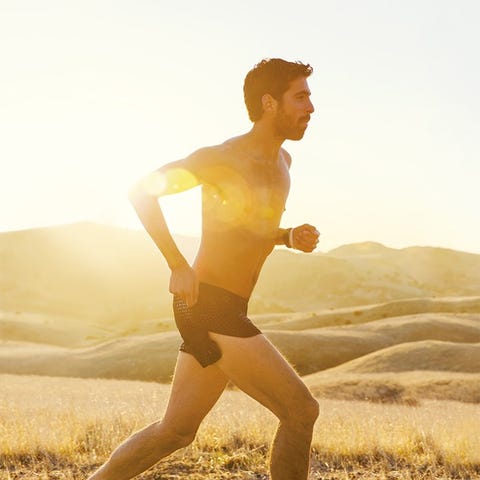
Solar radiation
Thermal conduction: Unlike radiation, conduction has to do with the transfer of heat through contact with the object, physical or solid.
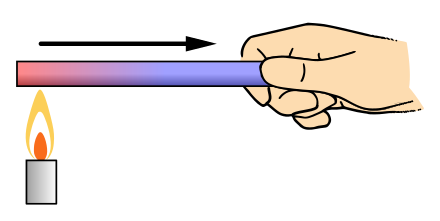 Thermal conduction
Thermal conduction
Thermal convection: it is a conductive form of exchange of heat and matter, but both bodies are air and water. Swimming or cycling in strong currents and winds implies greater heat loss.
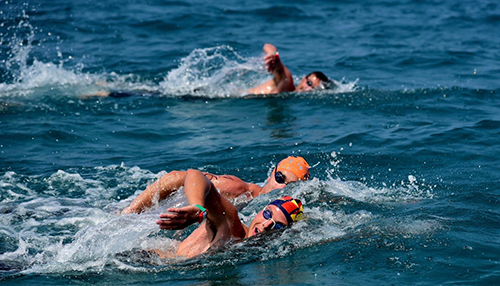
Thermal convection with water
Evaporation: The only physical means to release endogenous heat into the environment. Based on the principle that each liter of sweat or water on the skin is equivalent to dissipating 580 calories. It will depend on 3 factors:
A) Relative temperature and humidity.
B) Convective currents that are around the body.
C) Surface of the skin moved to the environment.
1 liter of sweat “evaporated” is 580 kcal.
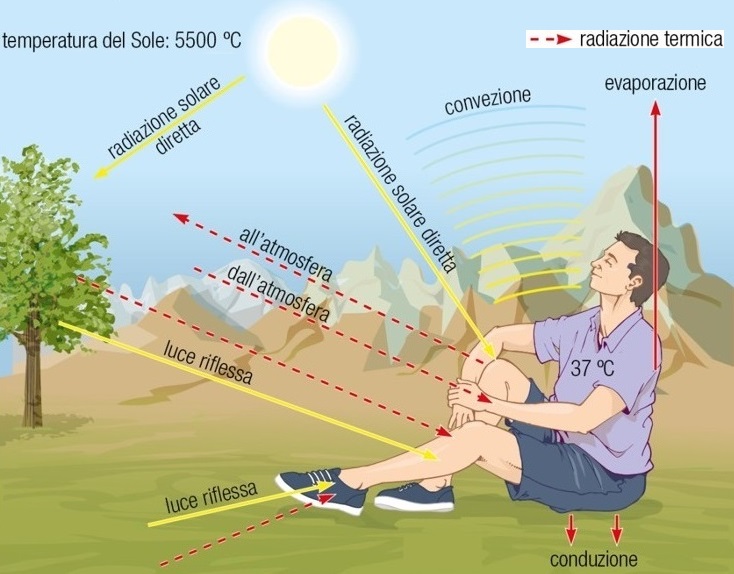
Image of all physical exchanges of heat and environment
¶.10 Sources of cenergy reaction:
🔸 (For Herera Solis 2019) understanding energy becomes complicated, since it can manifest itself in various ways, and at the same time, it can manifest itself as movement or as a total, partial and minimal change in the shape of the structure and molecule. Having said that this(Andreas Kalcker 2020) teaches us with a very accurate calculation the hypothetical energy consumption of a normal person, therefore, it starts with brain energy. The brain power consumption of a normal man is 25 W, multiplied by 3,600 seconds, multiplied by 24 hours for a total of 516 calories (2,160 kilojoules), temperature regulation consumption e of respiration is at least 500 W, multiplied by 3,600 seconds, multiplied by 24 hours, equals 10,325 calories (43,200 kilojoules).Without having done any physical exercise, we are spending at least 12,286 calories? However, this calculation is incomplete …
In case of making an Iron Man, Kalcker follows, these numbers must multiply into exponentially, in fact, the question would be the following …how can we obtain and create the energy for survive such an effort. In theory it is not possible, but in practice we can see that the evidence is really real.
How can people who play sports survive extreme, like an Iron Man? where they swim 3.86 kilometers in the open sea and they immediately cycle 180 km, followed by a marathon 42.2 km and with a limit of 17 hours to reach it?
All this without stopping, the only thing they ingest are liquids, which are mainly sugar water and oxygen, but breathing intensely. It is estimated that at least 80,000 are needed calories to complete this race. However, the body cannot storing more than 2,000 calories from glucose in the liver, muscles and in the blood and cannot acquire this huge amount of calories during physical exercise. There is something that does not add up.
🔸The human body is made up of more than 70% water (Rocco Palmisano 2018). The muscle is made up of proteins and water, of which proteins are 1% of the muscles and water 99% (Andreas Kalcker 2020). We know that salt water has many electromagnetic properties (Pedro Posas Terrado 2015) and it can act as a capacitor or battery capable of storing energy and information.
Then water could be much more important in the creation of physiological energy than previously thought.
🔸(Herrera Solis 2019) quoting Einstein “the energy of the known universe is determined by the generation and distribution of energy” he adds that this is also valid for living beings, as demonstrated by Kleiber's law: E = m 3/4. It reads like this: Energy is equal to mass raised to three quarters. The author is Max Kleiber, he studied the amount of food that livestock raised for human consumption needed to achieve optimal development and tool and came to the conclusion that any organism needs to ingest an amount of food equal to its high mass to 3/4 in order to live, reproduce, grow, etc. This means that the larger the animal, the less food it needs and it is a law valid in all living beings, of any kind and size, terrestrial and marine. This law describes the uptake, l’ use and loss by biological systems, which unfortunately did not understand much, but Solis' discovery on the ability of melanin to transform light energy into chemical energy, that is human photosynthesis, by dissociating and synthesizing the water molecule, has re-explained and clarified this law; The larger an organism, the better it functions as an antenna. Therefore, it is capable of capturing a greater amount of light energy than a small organism which is a smaller antenna. Finally, photosynthesis in humans teaches us that our body obtains from food and glucose the elements necessary to synthesize most of the molecules that are used for the growth, maintenance and reproduction of organisms; instead, the energy defined as everything that produces growth, our body obtains it from light through the dissociation of the water molecule as plants do.
🔸 (Podolsky and Kitzinger 1966) They proved that not there is a high usable energy in the phosphate bonds of ATP and phosphocreatine. Our body and our cells obtain energy through a combustion process, or “oxidation”; So we burn fat, carbohydrates and proteins, but we are also able to burn toxins. However, he says the question should be put like this: how does the body generate energy necessary to live?
We can read in many places that adenotryposphate or ATP are responsible for cellular energy, since according to current science, ATP is necessary for the shortening of the’actin and myosin of the filaments of the cross bridges, necessary for the muscle contraction, and is one of the main energy needs of animals, essential for locomotion and respiration.
The ATP presumably it provides the energy with which the phosphates are transferred to other stronger bonds than glucose or fructose, according to the books, despite the the fact that energy is needed to break the bonds. It's a good theory, ma … where is the proof?
(Gilbert N. Ling, 1989) biochemist and cell physiology of the University of Chicago, on the other hand, has made numerous experiments, and has also verified that the idea in as such is wrong. He found that the concentration of potassium and sodium in the muscles did not change during the experiments. The result has shown that the minimum energy required for the postulated sodium pump is at least four times greater, or 400% of the maximum available energy for the muscle cell, even if the muscle spends all its energy pumping sodium, and even if in the processes all the essential elements of conversion and use of energy work at 100%.(Podolsky e Kitzinger 1955) , (Podolsky e Morales 1956).
After that (George and Rutman 1960)they demonstrated conclusively and unequivocal that the concept of high-energy phosphate, is itself a error. There is no high energy that can be used in ATP and phosphate bonds phosphocreatine.
The other possible source of energy for the body, as we have already anticipated, is the thermal energy of the infrared radiation. The study by (Dr. Pollack 2016), from the University of Washington (“The fourth phase of water”), argues that the waters structured are able to store negative electrons, which are the real source of energy for our muscles and cells.
Finally, for (Kalcker 2019) Chlorine dioxide responds with sufficient energy for exercise induced by the brain and other biochemical components, such as ATP. The muscles they contract due to the restructuring of the water and we know it by the discoverer of vitamin C, Nobel Prize winner Albert Szent-Györgyi. However, Dr Kalcker's hypothesis is very respectable, in fact the body creates oxyhydrogen (HHO), also known like Brown's Gas, using it catalytically. If HHO goes through a catalyst, it creates huge ones amount of heat without flame; we have a flame temperature dynamic.
¶11 MEMBRANE POTENTIAL AND PHYSIOLOGY OF MITOCHONDRIA
Cell membrane
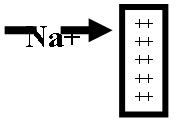
- Rest potential in the nerve cell membrane Standby:
- when they are not transmitting signals = – 90 Mv
- It is produced by:
- PASSIVE DIFFUSION OF K: through a protein channel = – 94 Mv.
- PASSIVE DIFFUSION OF Na: through protein channels but with permeability lower than K = + 61 Mv.
| IONS | INTRACELLULAR | EXTRACELLULAR |
| Na + | 14 mM | 142 mM |
| K – | 140 mM | 4 mM |
| Cl – | 4 mM | 120 mM |
| HCO 3 – (bicarbonate) | 10 mM | 25 mM |
| H + (hydrogen ion) | 100 mM | 40 mM |
| Mg 2 + | 30 mM | 15 mM |
| Like 2+ | 1 mM | 18 mM |
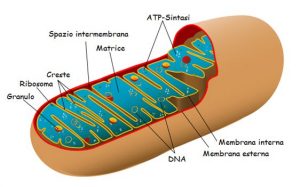
(Electric unit of the airframe)
Mitochondria are cellular organelles responsible for providing the most part of the energy required for cellular activity (cellular respiration) and are found in the cytoplasm of the cell.
Mitochondria act as the propellers of cells and synthesize ATP at the expense of fuels metabolic (glucose, fatty acids and amino acids). Mitochondria have one outer membrane which is permeable to metabolite ions and many polypeptides. That is it is due to that they contain pore-forming proteins called porins or VDAC (voltage dependent anion channel), which enable the passage of molecules. The presence of the 2 stimulates the increase of mitochondria present in the cell. This increase in energy translates into increased cellular activity. The cell thus enriched can act on the base to the needs that arise in the body at that moment .
¶.12 Data analysis
“TEST” First Workout; Friday 28 May 2021
| 1) Average body temperature. | 36,9 | |||
| 2) Average Heartbeat | 116,1666667 | |||
| 3) Average of oxygen in blood; Oximeter. | 96,5 | |||
| 4) Sweat | 0,061 kg | |||
| 5) Difference between body weight before and after training (before urinating) | +0,4 | more | ||
| 6) Difference between body weight pre and post workout (after urinating) | -0,3 | less | ||
Complete heart rate average: (Polar system; athlete's watch) https://flow.polar.com/shared/7e55e56a94552d7e43ccf666aab37d95
“TEST” Second Workout; Friday 4 June 2021
| 1) Average body temperature. | 36,83333333 | |||
| 2) Average Heartbeat | 110,8333333 | |||
| 3) Average of oxygen in blood; Oximeter. | 97,25 | |||
| 4) Sweat | 0,12 kg | |||
| 5) Difference between body weight before and after training (before urinating) | +0,3 | more | ||
| 6) Difference between body weight pre and post workout (after urinating) | +0,3 | more | ||
Complete heart rate average: (Polar system; athlete's watch)
https://flow.polar.com/shared/7e562a58075db3bc6afc1cd201bb18a5
Thermal equilibrium.
1) Although the difference in the mean in both workouts was almost non-existent: First test: 36.9 and second test: 36,83333333, we have however verified the first hypothesis of the research, that is the body temperature has maintained a lower average in the training in which "YES" chlorine dioxide is consumed in the form "CDS" (75 ml of 3000 parts per million) diluted in water (1.425 L) total between water and dioxide: (1.5L), compared to training in which only natural mineral water is consumed (total 1.5 L). Both bottles with their respective liquids had a temperature below 11 degrees, otherwise the dioxide gas in the form of “CDS” diluted in water it would have evaporated.
We must say that both waters were from the Sant’Anna brand.
Therefore, adequate consumption of chlorine dioxide would apparently be an excellent strategy to keep the internal organic environment in balance, and thus prevent electrochemical imbalances of the cells that would lead to an excessive creation of body temperature.
Despite the verification of the hypothesis, we think it is of vital importance to obtain more information on this physiological parameter, in fact, we consider that it is too little to find solid confirmation, especially when there are atmospheric and seasonal factors that perhaps influence the organism more strongly. with respect to the effects of “CDS” mixed with water.
A decisive factor in infected was also the research methodology, since the athlete was not directly influenced by solar radiation, which would have helped to a different thermal balance, as it would have produced more heat but at the same time more evaporation of sweat, which helps to cool the body.
Furthermore, the research methodology on the “fixed spinning bike” got stuck a bit’ also the exchange of heat between the body and the environment, that is, it blocked the “convection” with the flow of the wind, which would have helped to lose more color through this physical phenomenon.
Finally, we think that body temperature, an aspect not considered in sports performance, also linked to the individuality of each person (body diameter - quantity of sweat glands - nutrition) is still an excellent source of data since it would help to describe better how each organism reacts during sporting activity.
Cardiac balance
2 The second hypothesis was also confirmed, in fact, the difference was much more marked than the body temperature. The average heart rate was lower in training in which chlorine dioxide diluted in natural mineral water was consumed:
“Yes dioxide” :’110,8333333 bpm’, compared to training in which dioxide was not consumed, that is, only natural mineral water: “Not dioxide”: 116,1666667 bpm.
The difference found in our measurements was more than 6 beats per minute less than the training in which the dioxide was not consumed:”CDS”, that is, only natural mineral water, therefore, we can confirm that chlorine dioxide through its extra oxygenating quality helps to create energy in cells in general, and my fascial cells in particular, making the cardiorespiratory system work in a more effective and economical way.
We must also say that the number of data collection on this physiological parameter was 6 times, together with the blood saturation, same device; “oximeter”. Despite this, we also confirmed it with the data obtained from the measuring watch that the athlete had on his wrist:
“TEST” First Workout; Friday 28 May 2021:
https://flow.polar.com/shared/7e55e56a94552d7e43ccf666aab37d95
“TEST” Second Workout; Friday 4 June 2021:
https://flow.polar.com/shared/7e562a58075db3bc6afc1cd201bb18a5
This system has shown that the average during "all the first training was"; “Not dioxide” 126 bpm, The Max of 145 and the Min of 66. 826 kcal Calories.
Instead the average during “the whole second training”; “Yes dioxide” fu di 125 bpm, the Max 142 and Min 76.817 kcal Calories.
Blood saturation:
3) The third hypothesis has also been verified, the average oxygen in the blood was higher in the training in which "YES" chlorine dioxide diluted in natural water is consumed, compared to the training in which the dioxide is not consumed , that is, only natural mineral water.
While on the first training session the average was 96.5% SpO2 (No dioxide; only water), instead the average of the second was 97.25% SpO2 (yes dioxide), so we conclude that Chlorine dioxide through its biophysical composition and its oxygenating and oxidizing qualities actually helps to oxygenate cells in general, but my fascial cells in particular.
Thermal balance
4) The fourth hypothesis was not exactly verified, we thought that the athlete would sweat less during training in which dioxide diluted in mineral water was consumed but it was not so. In fact, the athlete really sweated more: 0.12 kg, compared to training in which only natural water was consumed: 0.061 kg. Perhaps the reason for this phenomenon is due to the waste component that is released when this substance acts, or sodium chloride (salt), which is then evacuated by sweating to maintain internal homeostatic balance.
For each liter of evaporated water, the body transfers to the environment an amount of heat equivalent to 580 kcal, so in the first workout the sweat was 0.061 kg or 0.61 grams, which converting it into Liters gives us a total of 0.0061 L of sweat, but multiplying it by 580 kcal and dividing by 1 liter gives us the total of:”3,53″ kcal transferred from the body to the environment.
Instead in the second workout the sweat was 0.12 kg, or 12 grams, which by converting it into Liters gives us a total of 0.012 L of sweat, which, however, multiplying it by 580 kcal and dividing by 1 liter gives us the total of “6,96” Kcal. That's why the average body temperature was lower in the second workout (yes dioxide) than in the first (non-dioxide).
(Veronique Billat 2002) She says it is important to understand that it is not sweat that cools the skin, but rather its evaporation.
Therefore it is insubstantial to sweat in cascades of water in front of the body thermoregulation, since this cannot easily evaporate on the skin;” the sweat useful in the thermal balance is what is not seen”, or microscopic droplets of sweat that evaporate immediately. This phenomenon is called “perspiration“. (Rocco Palmisano 2018)
We suspect this heat balance, ie producing useful sweat, which cools the skin via “convection” and with this the body was also the cause of the intake of dioxide.
Let us remember that we have translated the "sweat" parameter into the weight that the clothes and the towel had with sweat after having done both tests.
We must add that perhaps it is also due to a day with much more temperature. What was the weather like in Verona on June 4, 2021 – Verona Weather Archive »ILMETEO.it, with an average of 23 degrees, but with a maximum temperature of 29 °C which was precisely with the one that we started the test at 18:00.
Instead, the day from the first training in which only mineral water was consumed, we had an average of 19 °C , with a maximum temperature of 24 degrees which was precisely with what we started the test at 18:00 What was the weather like in Verona on May 28, 2021 – Verona Weather Archive »ILMETEO.it .
Instead the average humidity levels of both were almost equal:
May 28: 46%, and June 4 48%.
Here, too, a decisive factor was the research methodology, since the athlete was not directly influenced by solar radiation, which perhaps would have generated more body temperature in both workouts, making the sweating system even more in demand.
Caloric and water balance:
5) The fifth hypothesis was partially verified, the relative weight difference in both workouts after drinking 1.5L was positive, in fact, the body weight in each training increased by 0.40 kg on the first workout (not dioxide) , and 0.30 kg on the second workout (yes dioxide).
Nonetheless, the attention is called a lot to us is the net weight: (unit of weight after peeing) in the first workout the athlete decreased considerably, or 0.70 kg which makes a negative weight of (-0.30 kg) kg compared to the pre / first workout body weight.
On the other hand, on the second workout (yes dioxide) the relative weight and yet the net remained the same, in fact the athlete urinated very little, which made a positive net weight compared to the pre / second workout body weight.
In conclusion, it could be said “possibly” that the dioxide helped to better use the water taken in the energy physiology since in the first workout the athlete had a difference of 0.7 kg of water (he urinated 0.7 kg of pee) instead in the second one he did not almost urinated, remaining at the same post-workout body weight.
We must remember that the athlete during the week preceding the last training (he dioxide) made a daily intake of this substance (10 ML in 1.5L of Acqua Sant'anna) with the aim of experiencing its effects. before taking the training test.
¶.13 Conclusion:
It is interesting to underline a couple of apparent contradictions in the verification of the hypothesis, which perhaps the traditional paradigm of sports and training sciences is not able to explain clearly.
Perhaps the paradigm of biophysics would put these apparent contradictions in order, in fact this new paradigm is a branch of the biological and physical sciences developed by German and American Anglo-Saxon and Latin scientists.
If the calculation of caloric consumption takes into account the volume, age, effort or intensity, endurance and working time, the average heart rate, muscles, and above all the weight difference “Pre” and “Post” training, how is it possible that the same individual in front of the same training charge lost in the test performed only with water (0.30 kg), while in the test performed with dioxide he gained (0.30 kg).?
A possible answer could be the biophysical capacity that dioxide has to help in the oxidation process in general, by optimizing this combustion thanks to oxygen, that is, it would create more energy by consuming less fat, carbohydrates and proteins, e toxins (kalcker 2019) compared to the intake of natural water. Therefore, the traditional training theory should be revised since it argues that the ossidation does not necessarily imply oxygen, in fact, this premise is most likely false, and consequently the theory of neuromuscular energy creation through the Anaerobic system.
In conclusion, through a logical vision we strongly doubt that anaerobic exercises exist, since from a structural / systemic point of view in continuous connectivity, during each exercise, and it is necessarily, the organism physiologically needs oxygen to carry out its processes. more elemental, otherwise one could fall into forgetfulness of the greatest truth of human physiology: “without oxygen and its transport there is no physical performance, there is no health and there is no life.
Lack of oxygen is synonymous with acidity (balanced through the Bohr effect), and acidity is synonymous with imbalances and diseases. Then we are aware that the body's anaerobic cellular metabolism exists; Cancers, infections, etc., but this has nothing to do with the natural and healthy neurophysiology of the neuromuscular system, since (George and Rutman 1960) and others have conclusively and unequivocally demonstrated that the concept of high energy phosphate, it is itself a mistake. There is no high energy that can be used in the phosphate bonds of ATP and phosphocreatine, therefore there is no anaerobic neuro / muscular metabolism.
Another possible answer, as we have already anticipated, and is that effectively with the intake of the dioxide the athlete's body has used the water available in the body in a more effective form, and with this has contributed to the goal of create energy to face the training charge.
We must remember that the liquid taken was the same in both workouts: 1.5L, only in the first it was only natural mineral water, while in the second it was 1.425L of natural mineral water, plus 75ml of dioxide gas in the form of “CDS; Saturated gas in distilled water” at 3000 ppm, which also makes a total of 1.5L of liquid between water and dioxide diluted in water.
The suppression was that after the first workout (not dioxide) the athlete urinated more than 700 grams, thus reducing his weight by 300 grams compared to pre-training. After that, in the second workout the athlete did not urinate anything, increasing to 300 grams compared to his pre-training weight, or “relative weight” and “net weight” they were identical.
In short, we can suspect that the water balance was greater in the second workout (yes dioxide) than in the first workout (not dioxide), since the athlete kept more liquid in his body (not urinating it), and thereby hydrated better overall his organism, perhaps creating more energy.
We must also remember that the body weight of the athlete before the first test was 82.8 kg. Then the athlete took the dioxide throughout the week, doing his daily activities.
At the time of doing the second workout, or pre-second weight test, the athlete lowered his weight to 81.5 kg, therefore, the effect of the dioxide should not only be attributable to the intake during the physical test, since the methodology of our research pre-established their intake a week before, looking for the adaptation of the body to the effects of this substance before doing the physical test.
Como is possible that despite the saturation in blood was higher with chlorine dioxide “CDS”, which would have brought more oxygen to the mitochondrion of the cells, therefore greater cellular activity and consequently combustion, how is it possible that the athlete has gained more weight if the amount of liquid was the same? Even the sweat was higher compared to the test performed only with natural water.
A possible answer, in fact, would be that water actually performs a much more primordial function at the energetic level in our organism both at the biophysical and biochemical level, and it is for this reason that there are many theories that will have to be revised, since the data empiricals do not agree with traditional training theories.
In short, the human body is made up of more than 70% water (Rocco Palmisano 2018). Muscle is made up of proteins and water, of which proteins are 1% of muscles and water 99% (Andreas Kalcker 2020). So, we conclude that water is much more important in the creation of physiological energy than what was previously thought.
For example, the discovery of the fourth phase of the water made by Gerald Pollack could be essential to put some’ many inconsistencies in order, in fact he has found a real energy transformer in water. This water inside the human body however it would be recalled, stimulated, formed through chlorine dioxide and perhaps also through ionized water, as well as vegetables, eggs, fruits, finally a healthy and varied diet.
The study of the impact of dioxide and other alkalizing and oxygenating substances with regard to biological homeostasis is for us THE key to better understanding sports performance as well as integral health.
Perhaps the chlorine dioxide has really helped the excellent functioning of systemic homeostasis, which becomes complex in its interactions, and is inseparable between all systems that make up the human body, but which has survival as its main biological law as well as the power of the most effective and economical form possible. In fact, physical / energetic power is synonymous with neuro-psychophysiological efficiency, that is, creating biophysical energy with fewer fuels, without however arriving at homeostatic or allostatic imbalance.
The physiological effect of dioxide in the body, together with the discovery of structured water and human photosynthesis, calls us to rethink the physiology and training methodology, as well as the integral health of the athlete and of people in general.
Was the amount of chlorine dioxide the right one for the athlete's body?
The answer is Yes and No.
Yes, because the recommended protocols for beginners who want to take this substance is 10ml of “CDS” in 1,490 L of natural mineral water, with 10 daily intakes every hour. The athlete did a week without problems, in fact he was able to do all his daily activities without any discomfort.
No, because although during the test he did not have any kind of physiological discomfort, on the contrary it was much more balanced than training without chlorine dioxide “CDS”despite this, and having a hiring protocol “frequent” of 7 intakes every 15 minutes, for 1.26 hs of test, of 75mL of CDS in 1.425L of natural water, but the malaise was born later. That is in the words of the athlete the next day “June 5th “:
“I am generally fine but yesterday I just finished pedaling and even a little bit’ this morning, my tongue is pinching especially the tip of my tongue and I noticed that a gland in my left armpit has swollen and this night at 3 am I woke up and didn't sleep anymore. Then I fell asleep again at 6. The gland was more swollen tonight now it's only slightly. It had never swollen lately. Maybe a few years ago.
The athlete again on June 6:
“SHe slept well at night, the gland is reabsorbing, it doesn't bother me, everything, quiet”.
Unfortunately, the athlete had really discomfort and difficulty sleeping due to this sweat gland (perhaps due to greater sweating), in the armpit, consequently he did not have a good recovery through rest and sleep.
Therefore, we conclude that the amount of dioxide was excessive during the physical test, and therefore we hope to find a right amount, or perhaps a right intake methodology, so we can achieve the same or better parameters of homeostatic balance in the physiology of the training, but without any kind of discomfort on the sleep and recovery phase, since in reality these phases form an essential part of the integral training of athletes.
THE PHYSOLOGICAL LOGICAL THREAD IS THE FOLLOWING.
By drinking chlorine dioxide in the form of “CDS” a lower body temperature is maintained, more sweat is generated and more evaporation of sweat is generated, but you urinate less after training, and consequently, it is suspected that there is a better water balance. Fewer calories are also consumed, as body weight has actually risen, but at the same time, a lower average heartbeat per minute is maintained throughout the duration, and more oxygen is saturated into the blood, compared to the same standard spinning workout in which however only natural mineral waters were drunk.
Postscript: Since we know very few scientific articles on the subject, and since it was our first research on this topic, we are absolutely aware that it is of vital importance to deepen and clarify questions that have arisen during the concretization of this research. And that is why we are proud and proud to be able to build this new research channel linked to the physiology of healthy training.
AUTHOR: Josè De Laurentis, Doctor of Exercise Sciences, Movement Therapy Specialist. ATP tennis athletic trainer. Neuroscience consultant applied to cognitive motor learning, fitness and sport. Researcher specialized in the physiology of healthy training. Co-founder of the "human movement study center" www.Neuromove.it. Tel:3389724989.
¶.14 Bibliography
From books:
The fourth phase of water; beyond the liquid, solid and gaseous form. Gerald H. Pollack. (2018)
Melanin; the precursor of all forms of life Arturo Solìs Herrera. (2019)
Alkalinize and Ionize Rocco Palmisano (2018)
Forbidden Health eighth edition. Andreas Kalcker (2019)
Physiology and Training Methodology Veronique Billat. (2002)
Myofascial meridians. Anatomical Pathways for Body and Movement Therapists Thomas W. Myers. (2016)
Epigenetics and Psychoneuroendocrinology. Francesco Bottaccioli. (2016)
Fascia in Sport and Movement. Stephen Mutch – Werner Klingler. (2015)
PNEI and the myofascial system: the connecting structure Marco chiera, Nicola Barsotti, Diego Lanaro Francesco Bottaccioli. (2017)
From scientific articles:
Behaviors of fibroblasts during the menstrual cycle. (Carla Stecco 2019)
Sudore (my-personaltrainer.it)ù
(PDF) Human Photosynthesis, the ultimate to the long.
Hemoglobin (my-personaltrainer.it)
chlorine-dioxide-in-covid19-mechanism-of-molecular-action-in-sarscov2.pdf
Mitohormesis, UPR mt, and the Complexity of Mitochondrial DNA Landscapes in Cancer – PubMed (nih.gov)Sodium and potassium effects on skeletal muscle microsomal adenosine triphosphatase and calcium uptake – PubMed (nih.gov)
Magnetic_Waves-Enable-Cell_Communication.pdf
Ristow M, Schmeisser K. Mitohormesis: Promoting Health and Lifespan by
Increased Levels of Reactive Oxygen Species (ROS). Dose response. 2014 Jan
31;12(2):288-341. doi: 10.2203/dose-response.13-035.Ristow.eCollection 2014.
Ling GN, Debunking the alleged resurrection of the sodium pumphypothesis.
Physiol Chem Phys Med NMR. 1997; 29(2):123-98.
Ling GN, Truth in basic biomedical science will set future mankind free. Physiol
Chem Phys Med NMR. 2011; 41:19-48.
Podolsky RJ, Kitzinger C. (1955). Federation Proc. 14, 115.
Membrane potential and action potential – Human Physiology (page 2) – Monografias.com
From video:

